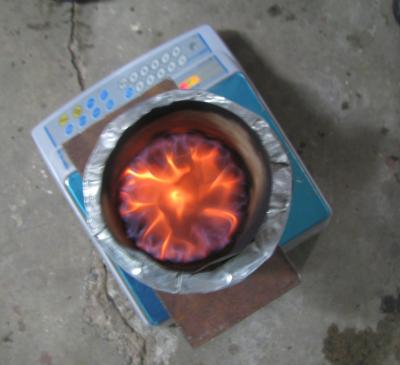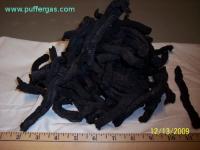Crispin Pemberton-Pigott and Roger Samson, January 2010
Roger Samson was here tonight and we made and tested a Grasifier: a Switchgrass burning stove based on the dimensions of the Vesto adapted to make a lower cost pellet burning stove for Haiti.
Power, 2.5 kw
Burn rate 8-10 g/min
Mass 550 g
Fuel load 600 g though it can hold 750
Lighted with two caps of paint thinners
The flame went completely blue (just before the end) then wobbled a lot and went out.
When it went out there was no smoke indicating there were no volatiles left.
Time to fabricate, about 30 minutes.
I see this as a burner that can be attached to the centre of a Haitian charcoal stove to convert it into very clean burning a pellet stove.
Char yield: 25% of the initial dry mass.
Moisture content of the initial fuel, about 7%
Ash: nearly none.
Regards
CrispinSneakers


